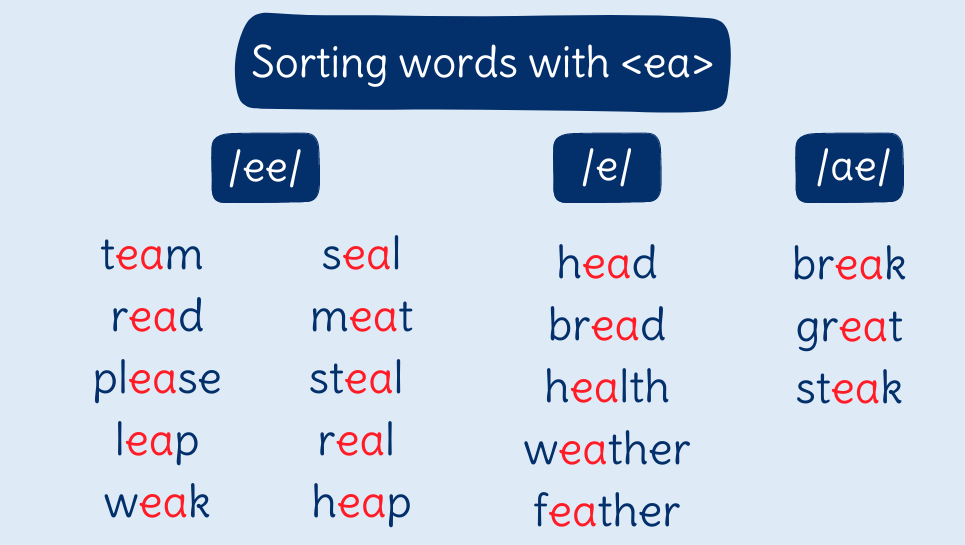What is Set for Variability?
Set for Variability is a cognitive flip that we do when we mispronounce a new word, and we need to try a different pronunciation to fit in that word. A classic example is when a learner reads the word ‘head’ as ‘heed’. They are misapplying their phonic knowledge to this word. They will have learned that <ea> can represent the sound /ee/ and applied this incorrectly as in the word ‘head’ it is pronounced /e/. The reader needs a quick strategy for “a mispronunciation correction”, according to Marnie Ginsberg. In short, we need to equip readers with a flexible approach to reading a new word. If this pronunciation doesn’t work, let’s try another and see if it fits!
How can we equip our beginner readers for “mispronunciation correction”?
1. Conceptual understanding
We need to teach students explicitly that a spelling (grapheme) can be pronounced in different ways. Once they understand this concept, they will not be alarmed or confused to find that a sound/letter correspondence they have just learned can be pronounced differently. Beginner readers encounter this very early on. Take the letter <s> in the word ‘sit’. Children will see this letter representing a different sound in the word ‘is’ and ‘has’. When they read the word ‘is’ as /i/ /s/ we say: “It can be ‘s’ but in this word it is /z/”. They blend the sounds /i/ and /z/ together and arrive at the correct pronunciation. This affirmative approach helps the novice reader hold on to what they have learned but teaches them a flexible strategy to reading new words.
Here is an example for the two ways the letter <g> can be pronounced. The reader may initially apply the sound /g/ to the word ‘gel’ but will need to do a cognitive flip and insert the sound /j/ to read the word ‘gel’ correctly. For this to happen the reader must be ready and set for variability.

2. Phonic knowledge
Beginner readers need phonic knowledge to make choices. If they are to choose an alternative pronunciation for a spelling, they need to have the alternatives at the tip of their tongue. In the case of <ea> children need to know that there are three ways to pronounce the spelling: /ee/ as in ‘team’, ‘e’ as in ‘head’, and /ae/ as in ‘break’ (and that there are only three words with the /ae/ sound: break, great and steak, so it is very rare).
We need to teach this explicitly, weaving the different pronunciations into the phonics programme. Once these have been taught, children can sort words into teams according to the pronunciation of the word:

3. Phonemic awareness skills
When children read a new word, they need to have phonic knowledge (what sound the letter represents) and to blend the sound into words. When they make an error and need ‘mispronunciation correction’ they need to do that ‘cognitive flip’ and try another pronunciation.
The best activity that helps children develop this ‘flip’ strategy is word chains. In this activity children need to delete, add, or change a sound in a word. This can be done with real words, e.g.: ‘sit-sat-at-it’ or with nonsense words: bod-brod-brid-blid-blim-blom-lom. With younger readers it is best to use real words as nonsense words may be confusing. With older readers nonsense words are very helpful as they will encounter syllables that make no sense on their own. Take a look at our free word chains here.
Did you know that our Dandelion Readers Level 3 series has several books that are designed to develop the ‘Set for Variability’ strategy? Can you spot which spelling is targeted in this book?



